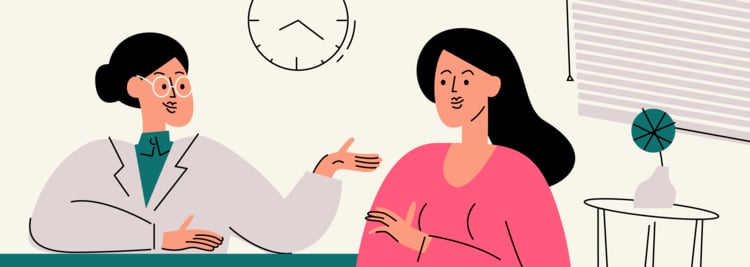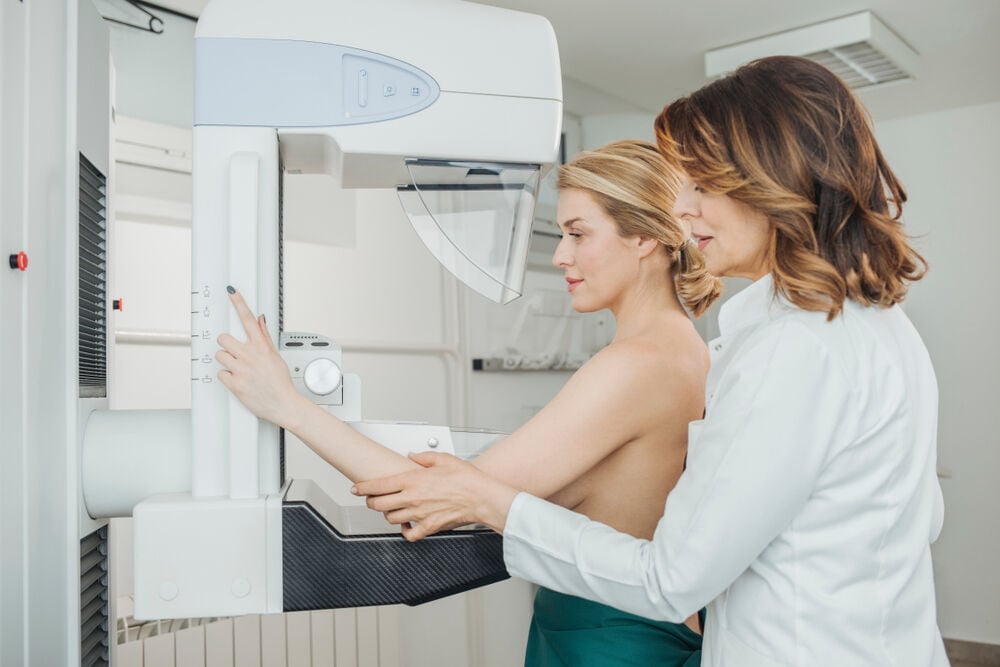Breast cancer screenings are vital to maintaining long-term health and wellness. Due to the high price of medical care, however, mammogram costs pose a serious concern for both insured and uninsured individuals. Find out how you can protect yourself without breaking the bank.
-
Tracking cycle
-
Getting pregnant
-
Pregnancy
-
Help Center
-
Flo for Partners
-
Anonymous Mode
-
Flo app reviews
-
Flo Premium New
-
Secret Chats New
-
Symptom Checker New
-
Your cycle
-
Health 360°
-
Getting pregnant
-
Pregnancy
-
Being a mom
-
LGBTQ+
-
Quizzes
-
Ovulation calculator
-
hCG calculator
-
Pregnancy test calculator
-
Menstrual cycle calculator
-
Period calculator
-
Implantation calculator
-
Pregnancy weeks to months calculator
-
Pregnancy due date calculator
-
IVF and FET due date calculator
-
Due date calculator by ultrasound
-
Medical Affairs
-
Science & Research
-
Pass It On Project New
-
Privacy Portal
-
Press Center
-
Flo Accuracy
-
Careers
-
Contact Us
How Much Does a Mammogram Cost and Other FAQs


Every piece of content at Flo Health adheres to the highest editorial standards for language, style, and medical accuracy. To learn what we do to deliver the best health and lifestyle insights to you, check out our content review principles.
Why get a mammogram?
A mammogram is one of the best preventive measures against breast cancer. Your chances of developing breast cancer are too high to forego this screening. The American Cancer Society estimates that one in eight women will be diagnosed with it in their lifetime. It’s the second most common type of cancer in the U.S. and the most commonly diagnosed female cancer in the world.
Mammograms can successfully detect the disease in its early stages, possibly years before symptoms begin to show. Since its likelihood increases with age, it’s important for women over 40 (especially those between 45 and 54) to have one performed annually. A biennial mammogram is also an option after you reach 55.
Are mammograms covered by insurance?
Generally speaking, mammograms are covered by insurance providers. Numerous states such as Pennsylvania have passed legislation requiring both 2D and 3D mammograms to be 100 percent covered. Medicaid also picks up the tab, with zero out-of-pocket expenses.
Under the Affordable Care Act, recommendations from the U.S. Preventive Services Task Force and the Health Resources and Services Administration control how private insurers treat preventive services. Thanks to these guidelines, provisions must be made for breast cancer screenings at no cost to the patient, and they include:
- Biannual screenings for all women
- Annual screenings for anyone between the ages of 40 and 74 with an average likelihood of developing breast cancer
- Genetic testing and counseling for those with genetic mutations or a family history of breast cancer
- Preventive medications for more susceptible individuals who are unlikely to experience negative side effects
While many insurance companies must pay for the cost of 2D mammograms, three-dimensional mammography is a relatively new alternative that might not be fully covered. Check with your provider and research the laws in your state to confirm your financial responsibility.
Does Medicare cover 3D mammograms?
Yes. Medicare and Medicare Part B will pay for 2D and 3D mammograms once a year for women over 40. It does not cover yearly screenings if you’re under 39 but will do one baseline mammogram when you’re between 35 and 39.
If you’re exhibiting symptoms of breast cancer and need a diagnostic mammogram, Medicare Part B will pay this fee. Original Medicare, however, requires that you cover 20 percent of the Medicare-approved amount after the Part B deductible is applied.
Take a quiz
Find out what you can do with our Health Assistant
How much does a mammogram cost without insurance?
The cost of mammograms can be quite high without any form of insurance. On average, the screening runs anywhere between $90 and $250. Prices vary depending on your region and the type of mammogram you receive. 3D mammograms generally come with a higher price tag due to the advanced technology used and exhaustive information gathered.
Can you get a mammogram for free?

It’s possible to find free or low-cost screenings, especially during the month of October, which is Breast Cancer Awareness Month. Many foundations and organizations partner with hospitals to provide free mammograms. They include the Susan G. Komen Foundation, the National Breast Cancer Foundation, and the CDC’s National Breast and Cervical Cancer Control Program.
The National Breast and Cervical Cancer Early Detection Program (NBCCEDP) also helps women obtain mammograms at little or no cost. The Program Contact Map on the CDC’s website allows you to search for screening facilities by tribe, state, or territory.
Assistance is available even if you’re not uninsured and you meet any of the following requirements:
- If your current insurance provider doesn’t cover mammograms
- Your annual income is at or below 250 percent of the poverty line
- You’re between 40 and 64 years old. (Additionally, women between 21 and 64 are also eligible for free cervical cancer screenings.)
Alternatively, you can call the American Cancer Society to receive assistance in locating low-cost services.
Is three-dimensional mammography better than 2D?
There are a lot of 3D mammography pros and cons. Three-dimensional mammograms are considered more comprehensive than their 2D counterparts. During both screenings, your breast is placed on a platform and slowly squeezed between two clear plastic plates for X-ray imaging. The primary difference lies in these images.
2D mammograms only obtain front and side views, while three-dimensional mammography snaps multiple angles to create “slices.” These slices are then reconstructed into an image of your breast on the radiographer’s computer.
The research on three-dimensional mammography is still limited, but preliminary findings point to better images and more thorough screenings. If you have dense breast tissue, 3D mammos might be particularly beneficial since they offer a clearer picture. Three-dimensional imagery may be used in conjunction with ultrasound to enhance the level of detail further.
It’s not without its drawbacks, however. The level of radiation in a 3D scan is slightly higher than in 2D. Patients with larger breasts might opt out due to the greater amount of radiation used. As mentioned, 3D mammogram costs are steeper, resulting in higher copays and deductibles.
Takeaway
Alleviate your concerns over the cost of mammograms by checking with your insurance provider or utilizing government and nonprofit resources. Many insurers are required to cover screenings, including both Medicare and Medicaid. Note that you may be responsible for a small deductible or copay for diagnostic, as opposed to preventive mammograms.
If you’re uninsured, take advantage of local outreach efforts (especially during Breast Cancer Awareness Month) to secure a free or low-cost screening.
The importance of routine mammograms cannot be overstated. Whether you opt for 2D or 3D mammography, it offers peace of mind and can potentially save your life. Educate yourself and others on the process and benefits to increase awareness and keep women everywhere safe from breast cancer.


Hey, I'm Anique
I started using Flo app to track my period and ovulation because we wanted to have a baby.


The Flo app helped me learn about my body and spot ovulation signs during our conception journey.


I vividly
remember the day
that we switched
Flo into
Pregnancy Mode — it was
such a special
moment.
Real stories, real results
Learn how the Flo app became an amazing cheerleader for us on our conception journey.




